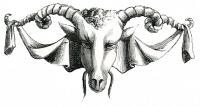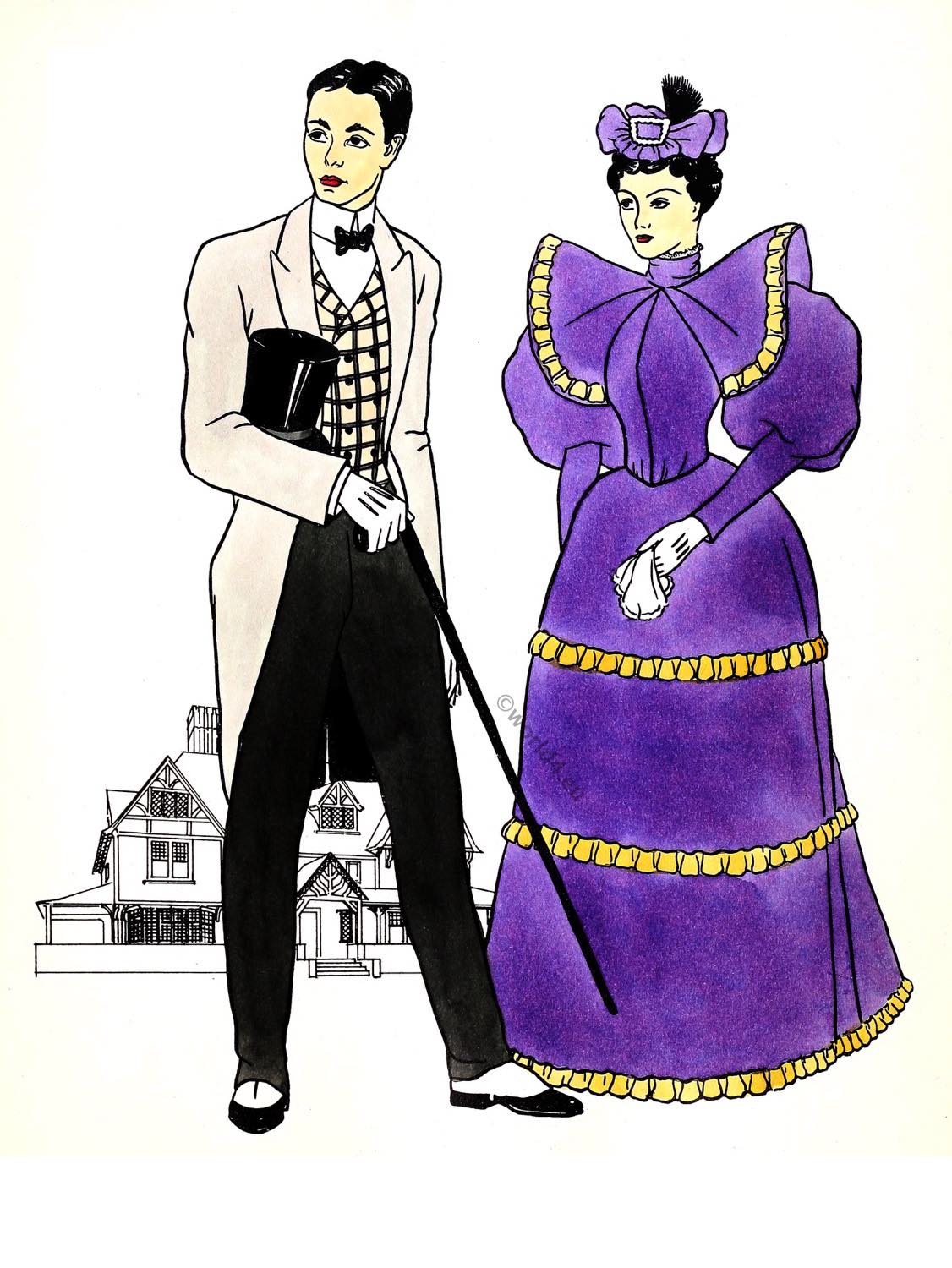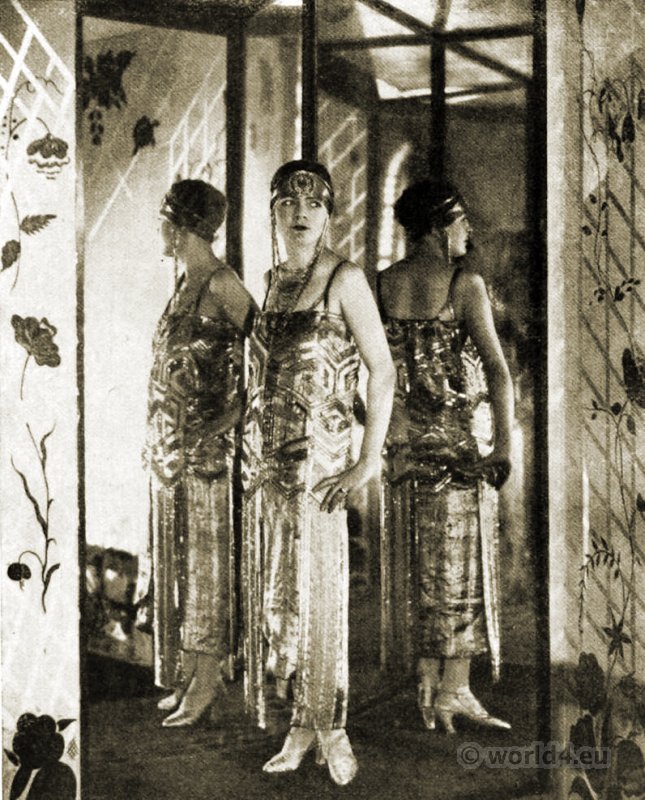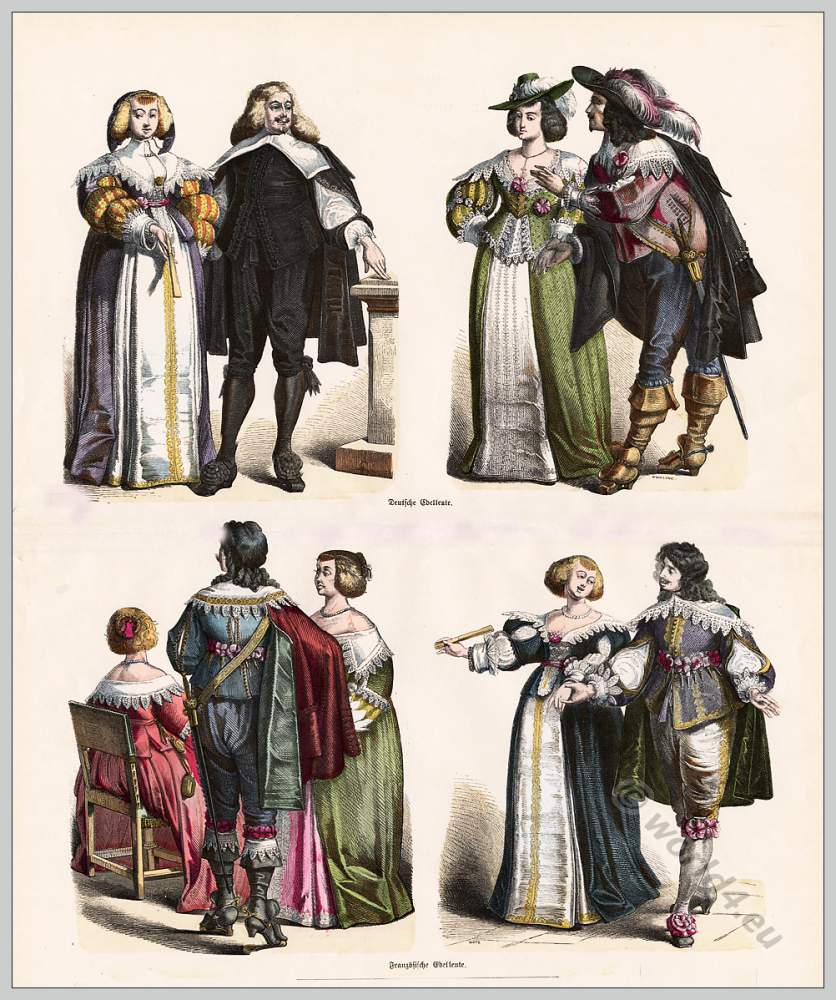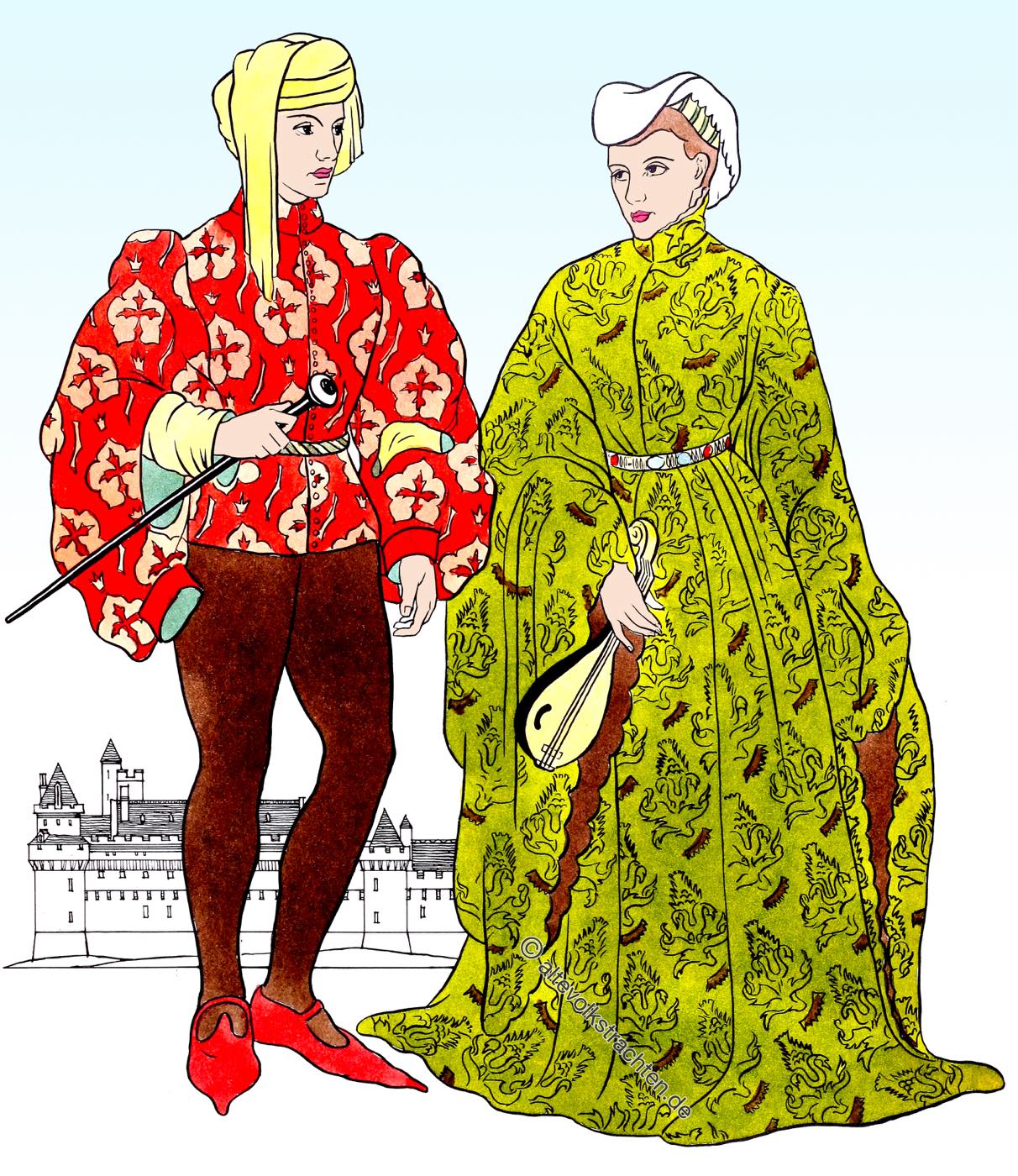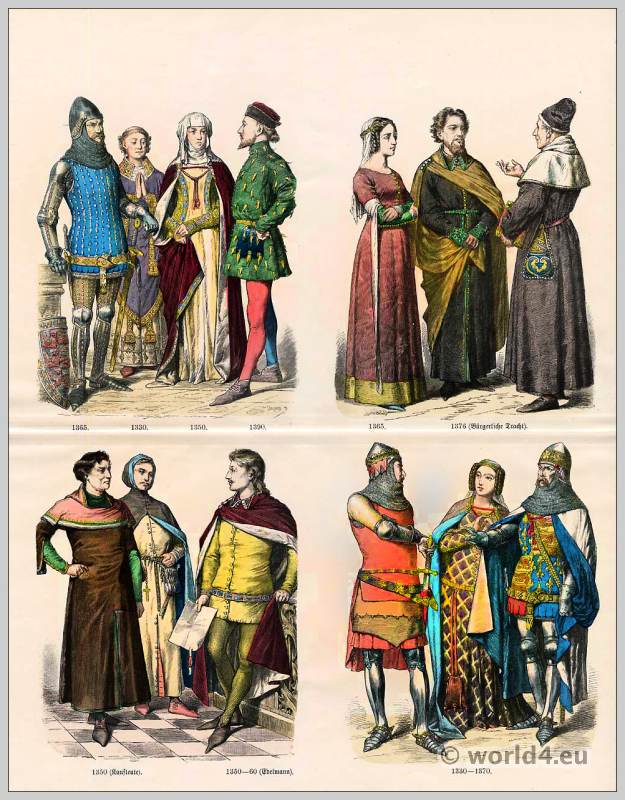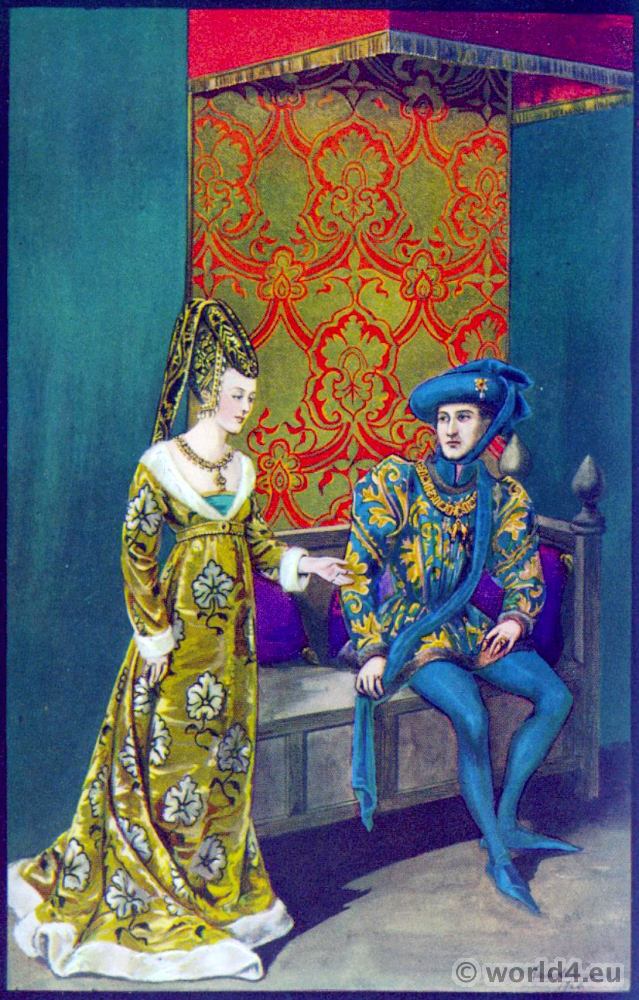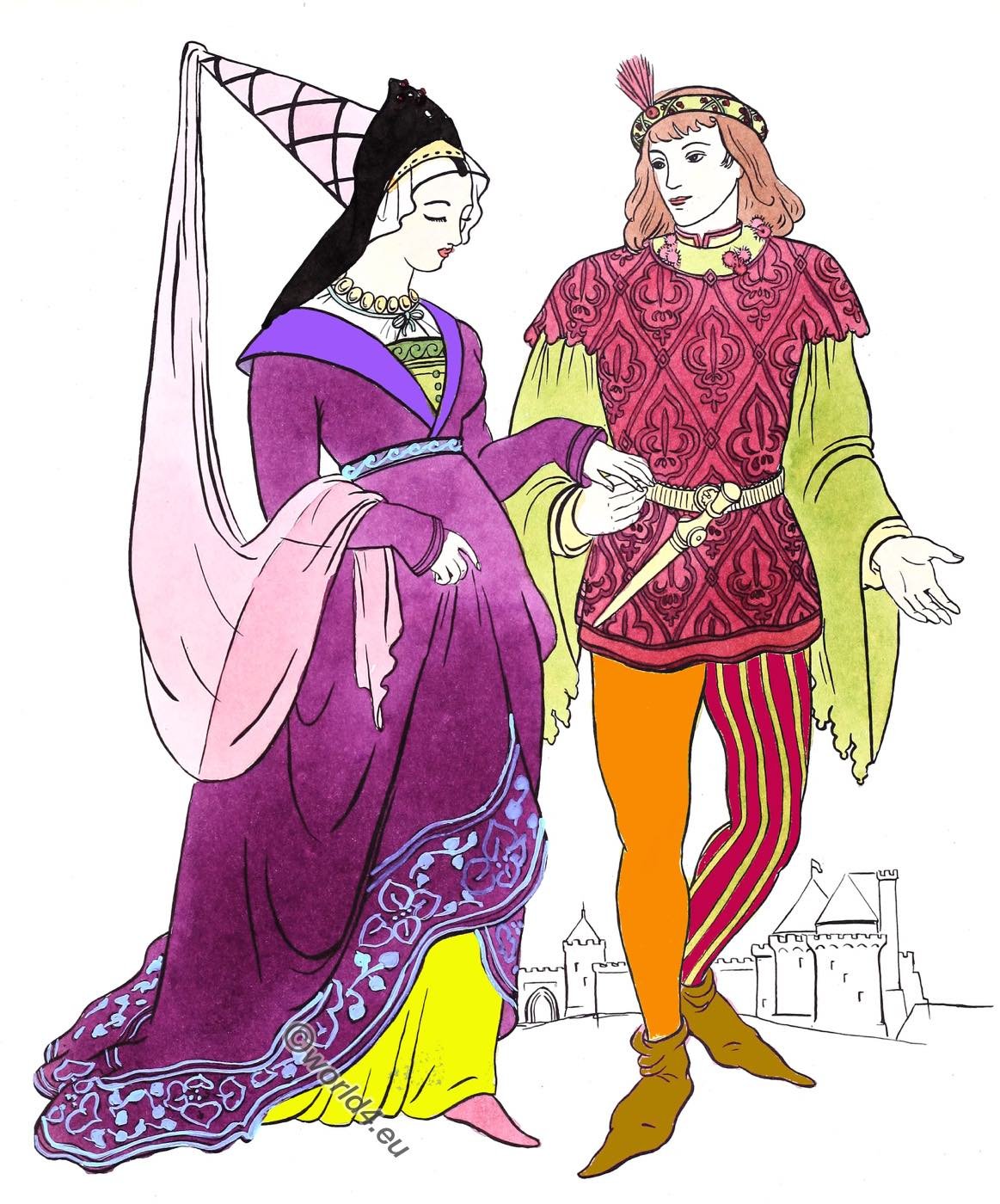
Cotehardie, Houppelande and Hennin. Fashion of the late 14th century.
The two people in this plate lived very late in the 14th Century and were probably young fashionables who were up to the minute in their styles.
The man wears the short fitted cotehardie with an elaborate all-over design. The motif of the design is a conventionalized fleur-de-lis in a diamond pattern. The fleur-de-lis and the pomegranate were very popular subjects for brocade patterns. The shoulder of his cotehardie has a small scalloped cap arrangement. From under this comes a full, gathered, hanging sleeve, made from a very thin soft material with a dagged seam edge. A third sleeve probably from his under-tunic shows at the wrist. The cotehardie is waisted with a gold linked belt, in which he carries a sheathed dagger. The small roll with the gay feather which this man wears on his head is often seen on pictures of troubadours. It was called a roundel. His wavy hair, which reaches to his shoulder, is worn with bangs. His hose are varicolored, the one has stripes and the other is plain. This is perhaps a remnant of the pied costume. His shoes called crakow or poulaines and are probably of cloth with leather soles.
The lady has on a houppelande, an early form of the garment which was so generally worn in the next century (the 15th). It is pleated, full skirted, and very long, usually with a train. There is a more detailed description of the houppelande accompanying Plate No. 28. The V shaped neckline is typical of the period. It is usually very low. Often, as is shown here, it is filled in with an undergarment or a semi-transparent bib effect. The sleeves are very long and probably are drawn completely over the hands in cold weather.
The headdress is very similar to the style of the next century. It was called by the French name hennin, flemish or Burgundian bonnet. Since the head was always completely covered, the women shaved all their hair off. Over the head was worn a thin chiffon cap which often hung out over the face. The actual hat was a long cone shape, made of a material much like what we now call buckram and covered with cloth. The part that fitted on the head was always trimiaed v.’ith a large piece of Velvet that came up in a point in front and covered the sides and back of the neck with what were called “falls.” The small circle of velvet sticking out on the forehead was used to pull the hennin forward since it had a tendency to slip backward. At the peak of the hennin is attached a long floating transparent veil.
History of Costume
Source: Museum Extension Project.
Related
Discover more from World4 Costume Culture History
Subscribe to get the latest posts sent to your email.

